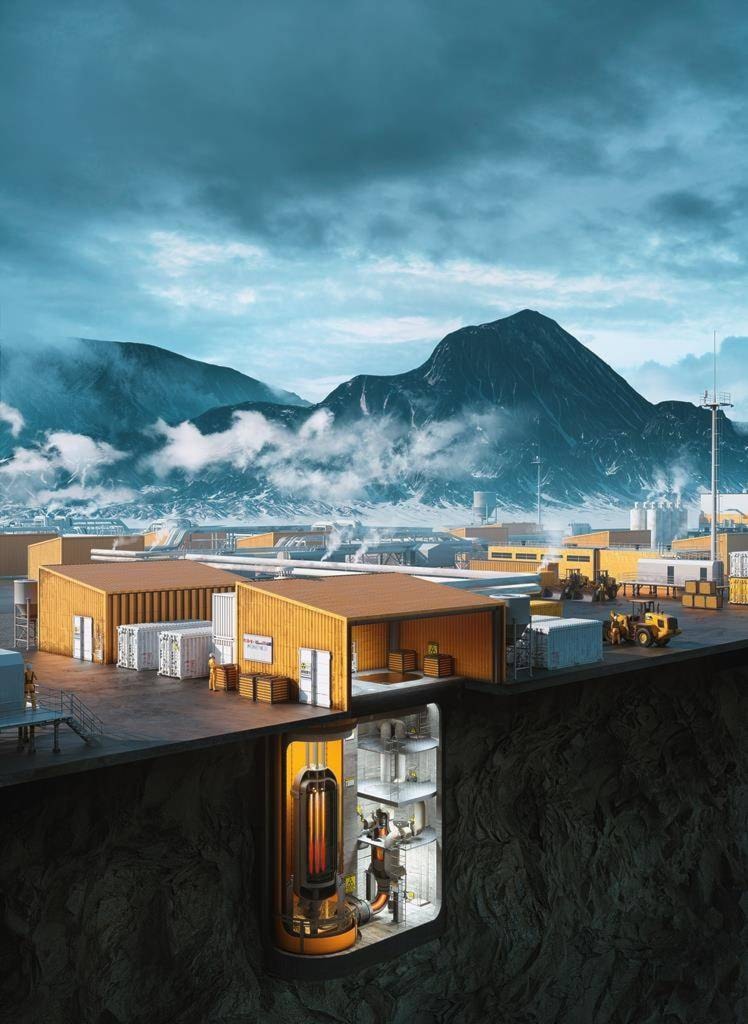The worldwide battle to control greenhouse gas emissions to fight climate change is the best thing that’s happened for growth in the nuclear energy industry in decades, its proponents say.
They add that the development of smaller, scalable nuclear reactors to churn out reliable, emissions-free energy at a much lower than traditional cost makes nuclear an option that’s become impossible to ignore.
“Thirty years ago, the vision was that nuclear energy is going to be so cheap that we’ll be giving electricity away for free,” said Robby Sohi, president and CEO of Global First Power Ltd., a company trying to build Canada’s first small modular reactor or SMR.
That early potential was short lived, though, as project costs escalated and Canada ran out of regions with enough power demand to justify a big expensive nuclear reactor.
“The biggest change is it is going to be just about impossible — I don’t see how — you can ever meet a 2050 (net-zero) target without nuclear in the mix,” said Sohi.
A recent study from the Canadian Nuclear Association found that the use of SMRs would allow heavy industries in Canada to reduce their GHG emissions by 216 megatonnes over 15 years from 2035 to 2050.
Using a model based on deploying 60 to 190 SMRs generating between 100 and 300 megawatts each for a total output of about 19,000 MW by 2050, it found GHG emissions would decline by 14 megatonnes per year on average, equal to taking over three million cars off the road per year.
Association CEO John Gorman pointed out Canada has had safe nuclear power for more than 50 years and nuclear currently supplies about 15 per cent of the nation’s electricity.
“The domestic market for these small modular reactors is about $5.3 billion between now and 2040 and the world market is going to be between $150 billion and $300 billion a year in that same time frame,” he said, touting rich export possibilities.
“So, does Canada want to take advantage of the deep experience that we have and our first mover advantage to find solutions here at home and export them abroad?”
Sohi joined provincially owned Ontario Hydro in 1991 and is the senior vice-president of corporate business development and strategy for its successor, Ontario Power Generation. Global First Power is a joint venture between OPG and Seattle-based technology provider Ultra Safe Nuclear Corp.
It is developing a “micro” SMR, or MMR, capable of generating 15 megawatts of heat energy (or about five MW of electricity) to meet the needs of a small remote community or a mine that would otherwise have to burn diesel, creating noise and pollution.
The reactor is designed to run for 20 years without refuelling, replacing about 265 million litres of diesel. Sohi said the goal is to be able to build it for about $200 million, plus or minus $30 million, to ensure it can compete on cost with diesel.
Nuclear power’s ability to produce energy without emissions makes it popular among politicians like federal Minister of Natural Resources Seamus O’Regan and the premiers of Alberta, Saskatchewan, Ontario and New Brunswick, but it has yet to win many converts among environmental groups.
Studies like the one published by the Canadian Nuclear Association are “hollow, promotional statements” designed to seek public funds for unproven and unneeded technologies, said Kerrie Blaise, staff lawyer at the Canadian Environmental Law Association.
“SMRs aren’t scalable quick enough,” she said, pointing out proven renewable power sources such as solar and wind should be promoted because action on climate change is needed as soon as possible.
“We have existing renewable generation technologies which are socially acceptable, they’re cost effective and they’re scalable now … why is it that this one is being favoured over other technologies that are relevant, scalable, cheaper, and don’t impose liability and risk on the Canadian public?”
The industry insists that the risk of an accidental meltdown of an SMR’s reactor core is greatly diminished compared with older generation reactors because of “passive” control designs that automatically shut it down if problems develop.
But Blaise pointed out any new reactors will create new streams of dangerous nuclear waste for which permanent storage solutions have proven difficult to nail down.
Sohi agrees the nuclear solution is not an immediate one.
Global First Power’s project, which is to be built at the Canadian Nuclear Laboratories’ Chalk River site in Ontario, is now undergoing an environmental assessment while detailed design and engineering is completed and it awaits a licence from the Canadian Nuclear Safety Commission.
Construction is expected to begin in two years and will take two or more years to complete, with the reactor expected to be in service by 2026.
Proponents say SMRs could be particularly effective in the oilsands to replace natural gas burned to create the steam needed to coax heavy bitumen to flow into a wellbore.
READ MORE: Trudeau pledges to cut emissions by 40% to 45% by 2030, short of U.S. goal
But a spokeswoman for oilsands producer Suncor Energy Inc. said SMRs are just one of the solutions it is considering as it aims for a 2030 emissions intensity reduction target.
“We’re in the early days of evaluation and no commitments or decisions have been made, but Suncor is exploring the possibility of small modular nuclear reactor technology as a zero carbon energy source for our oilsands operations,” said Melanie Ducharme in an email.
Pierre Gratton, CEO of the Mining Association of Canada, said his members are also watching and waiting.
“It’s hard to imagine the world achieving the Paris targets without nuclear power being part of the mix,” he said in an interview.
“It doesn’t mean we have to put all of our eggs in the nuclear basket.”
Dan Healing, The Canadian Press
Like us on Facebook and follow us on Twitter.
